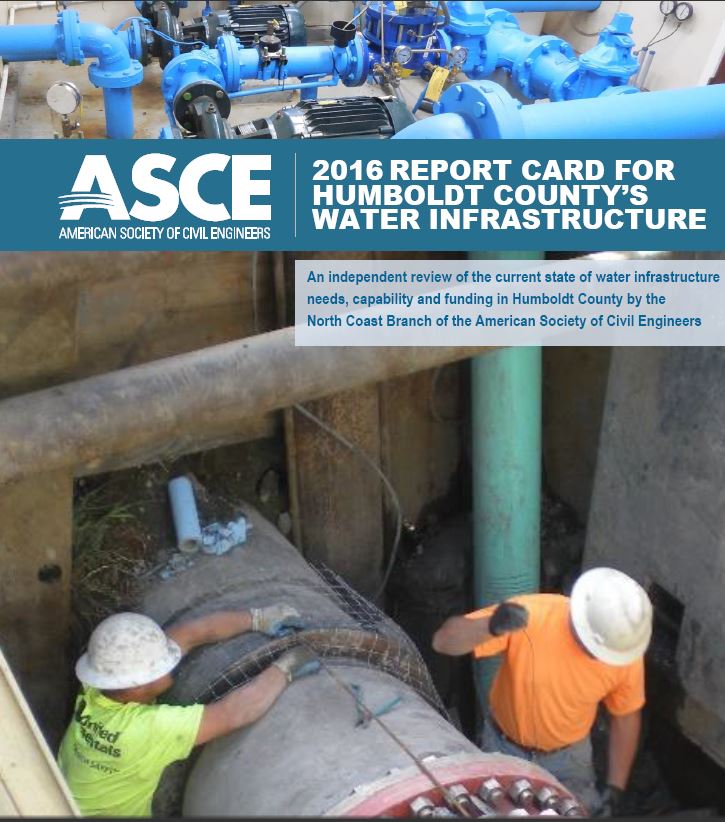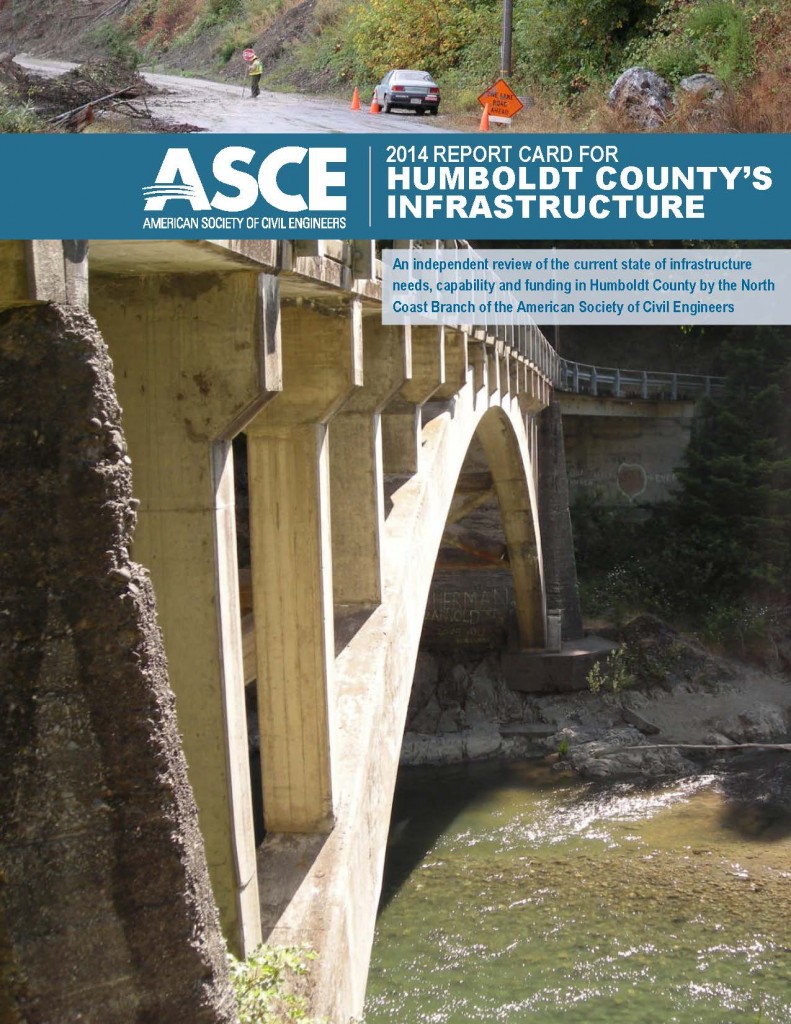California’s Orange County Infrastructure Isn’t Improving
July 21st, 2016 | By: America's Infrastructure Report Card
The Orange County Branch of the American Society of Civil Engineers today released its 2016 Orange County Infrastructure Report Card, grading 12 categories of the county’s infrastructure, resulting in an overall grade point average of “C+.” The Report Card was developed in collaboration with the UC Irvine Civil and Environmental Engineering Affiliates, an advisory group to the UCI Samueli School’s Civil and Environmental Engineering Department. A team of professional engineers from Orange County assessed the 12 categories, including Aviation (A-), Electric Power (C-), Flood Control & Levees (C-), Ground Transportation (C), Natural Gas (B-), Oil (B-), Parks, Recreation & Environment (C+), School Facilities (C), Solid Waste (B), Surface Water Quality (D+), Wastewater (B), and Water Supply (B). This is the fourth Orange County Infrastructure Report Card. The first, released in 2002, gave the county’s infrastructure a GPA of “C;” in subsequent releases in 2005 and 2010, the GPA has stayed constant at a “C+.” “In this first assessment of Orange County’s infrastructure since the 2008 recession, we found that while some areas have improved incrementally, others have declined, leaving our overall GPA stalled for more than a decade,” said Yaz Emrani, P.E., OC Infrastructure Report Card Chair. “Since our infrastructure works as a system, it’s important that Orange County increase investment so that we can move our infrastructure from ‘catching up’ to ‘ready for the future.’” The 2016 Orange County Infrastructure Report Card finds that much of the county’s infrastructure needs additional investment to keep up with demand. Of note:- While commercial traffic at John Wayne Airport approaches the current negotiated passenger limit of 10.8 million annual passengers until 2020, both general aviation and military demand fall short of meeting Orange County’s available capacity.
- Funding shortfalls for needed upgrades to bring regional flood control facilities in the county to its standards continue to be in excess of $2.7 billion.
- Deferred maintenance during the recent recession has exacerbated ground transportation needs. The existing funding sources are inadequate to meet the current and future demand, and it is estimated Orange County needs an additional $133 million annually.
- The condition of school facilities has declined in the past five years due to lack of funding.
- Due to increased volume of stormwater runoff during storm events, existing surface water quality infrastructure in Orange County does not have nearly the capacity to meet wet weather demands.
- Performing continuous and timely maintenance on the infrastructure to prolong use and minimize the need for costly repairs.
- Conducting comprehensive planning and long-term investment to ensure sound decisions about infrastructure.
- Preserving the environment while fostering economic growth and personal mobility.
Looking Into Humboldt County’s Water Infrastructure
March 24th, 2016 | By: America's Infrastructure Report Card
 Today the North Coast Branch of the American Society of Civil Engineers released a new 2016 Report Card for Humboldt County’s Water Infrastructure to show the state of the water infrastructure across 19 water systems within Humboldt County, California. The report found that today’s water infrastructure earned a good B grade overall, but to keep a good grade, planning must begin today for the infrastructure that is aging and will need replacement over the next 10 years. The report shows that over the next 5 to 10 years, local agencies need to plan for approximately $90 million in investments to maintain the existing system at its current condition.
ASCE was joined by several owners and operators to release the new report; the speakers included:
Today the North Coast Branch of the American Society of Civil Engineers released a new 2016 Report Card for Humboldt County’s Water Infrastructure to show the state of the water infrastructure across 19 water systems within Humboldt County, California. The report found that today’s water infrastructure earned a good B grade overall, but to keep a good grade, planning must begin today for the infrastructure that is aging and will need replacement over the next 10 years. The report shows that over the next 5 to 10 years, local agencies need to plan for approximately $90 million in investments to maintain the existing system at its current condition.
ASCE was joined by several owners and operators to release the new report; the speakers included:
- Yoash Tilles, P.E. Chair, Report Card for Humboldt County’s Infrastructure
- Cameron Muir, E.I.T, Practitioner Adviser, ASCE North Coast Branch
- Barbara Hecathorn, President, Humboldt Bay Municipal Water District Board of Directors
- George Wheeler, President, McKinleyville Community Services District Board of Directors
- Greg Orsini, General Manager, McKinleyville Community Services District
- Michael Flockhart, Public Works Director, Bear River Band of the Rohnerville Rancheria
- Marcus Drumm, General Manager, Loleta Community Services District
- Mark Lovelace, 3rd District Humboldt County Board of Supervisors
Humboldt County California's Transportation Report Card Released
September 8th, 2014 | By: Infrastructure Report Card
 This afternoon the 2014 Report Card for Humboldt County’s Infrastructure, an independent review of the area’s transportation needs, was released by the North Coast Branch of the American Society of Civil Engineers. The Report Card gave the County’s roads a grade of D+ grade and bridges received a grade of C-.
According to the new report, Humboldt County’s locally owned roads and bridges need five times the current investment simply to maintain their current condition.
“The grades are disappointing, but not surprising to Humboldt County’s citizens who drive these roads and bridges,” said Yoash Tilles, president, ASCE North Coast Branch. “This impacts our community’s economy, safety and daily life. It is time to make the investment to improve our transportation infrastructure.”
Among the key findings of the report:
This afternoon the 2014 Report Card for Humboldt County’s Infrastructure, an independent review of the area’s transportation needs, was released by the North Coast Branch of the American Society of Civil Engineers. The Report Card gave the County’s roads a grade of D+ grade and bridges received a grade of C-.
According to the new report, Humboldt County’s locally owned roads and bridges need five times the current investment simply to maintain their current condition.
“The grades are disappointing, but not surprising to Humboldt County’s citizens who drive these roads and bridges,” said Yoash Tilles, president, ASCE North Coast Branch. “This impacts our community’s economy, safety and daily life. It is time to make the investment to improve our transportation infrastructure.”
Among the key findings of the report:
- The Tribes, Cities and the County need five times its current funding to maintain the locally-operated roads and bridges at their current condition.
- In Humboldt County, the average condition of roads is assessed as mediocre.
- The locally-owned 170 bridges within Humboldt County received the average rating of mediocre.
- The number of lives lost in car accidents in Humboldt County is approximately double the state rate according to the California Highway Safety Plan for 2014.
- To improve roads and bridges, $426 million must be invested over the next 10 years.
Tags: bridges, California, Eureka, Humboldt County, infrastructure, roads, transportation
No Comments »
California DOT Issues Proposal Rule for Fracking
November 22nd, 2013 | By: America's Infrastructure Report Card
With vast reserves of hydrocarbon energy trapped deep under its surface, the state of California is getting ready to oversee the exploration for and recovery of the nation’s largest supply of oil and natural gas from shale fields. The California Department of Conservation (DOC) has issued a proposed rule that would govern the petroleum industry’s use of hydraulic fracturing and other methods of recovering oil and natural gas from shale thousands of feet below the Earth’s surface. Technically recoverable shale oil resources in the continental 48 states amount to 23.9 billion barrels. The largest shale oil formation in the U.S., however, is the Monterey—Santos play in southern California, which is estimated to hold 15.4 billion barrels or 64 percent of the nation’s total shale oil resources, a potentially enormous energy supply. But because most shale gas and shale oil wells are only a few years old, their long-term productivity is untested, according to the U.S. Energy Information Administration (EIA). Consequently, the long-term production profiles of shale wells and their estimated ultimate recovery of oil and natural gas are uncertain. Nevertheless, the California DOC is getting ready for the increased use of deep oil and gas recovery through a comprehensive set of regulations required by the state legislature in September. The DOC’s proposal was released on the same day the law was signed. The DOC has established a web site for the rule. The rule would govern all forms of well stimulation treatment, including hydraulic fracturing. Another key exploration technology, “acid well stimulation treatment,” also would be regulated. Acid stimulation, called acidizing, typically involves the injection of high volumes of hydrofluoric acid, a powerful solvent, into the oil well to dissolve rock deep underground and allow oil to flow up through the well. Conventional hydraulic fracturing, in which water and other chemicals are pumped at high pressure to create fissures in the rocks, reportedly does not work well in many parts of the Monterey Shale—a rock formation known for its complexity and low permeability, which makes hydraulic fracturing less effective. As proposed, the DOC rule would require a permit for well operations; reports of third-party water tests to be provided to all property owners and tenants near the well; pressure testing of all well tubing for at least 30 minutes before well stimulation; monitoring of all wells during and after operations; storage and handling requirements for all treatment fluids; and public disclosure of “the trade name, supplier, concentration, and a brief description of each additive contained in the wells stimulation fluids.” The rule also would require public disclosure of all sources, volumes, and specific composition of all water used in well stimulation and the disclosure of all disposal of well treatment fluids. These requirements track with ASCE Policy Statement 539, Hydraulic Fracturing. The ASCE Government Relations Department will analyze the proposed rule in detail and provide the Society’s official comments to the DOC by the January 14, 2014, deadline. ASCE members in California with professional expertise in oil and gas exploration and water-quality issues are urged to visit the DOC web site to determine whether they should comment on the rule as practicing civil engineers.Tags: California, CDOT, Environment, Fracking, Hydraulic Fracturing, Shale Oil, water
No Comments »



 */ ?>
*/ ?>













